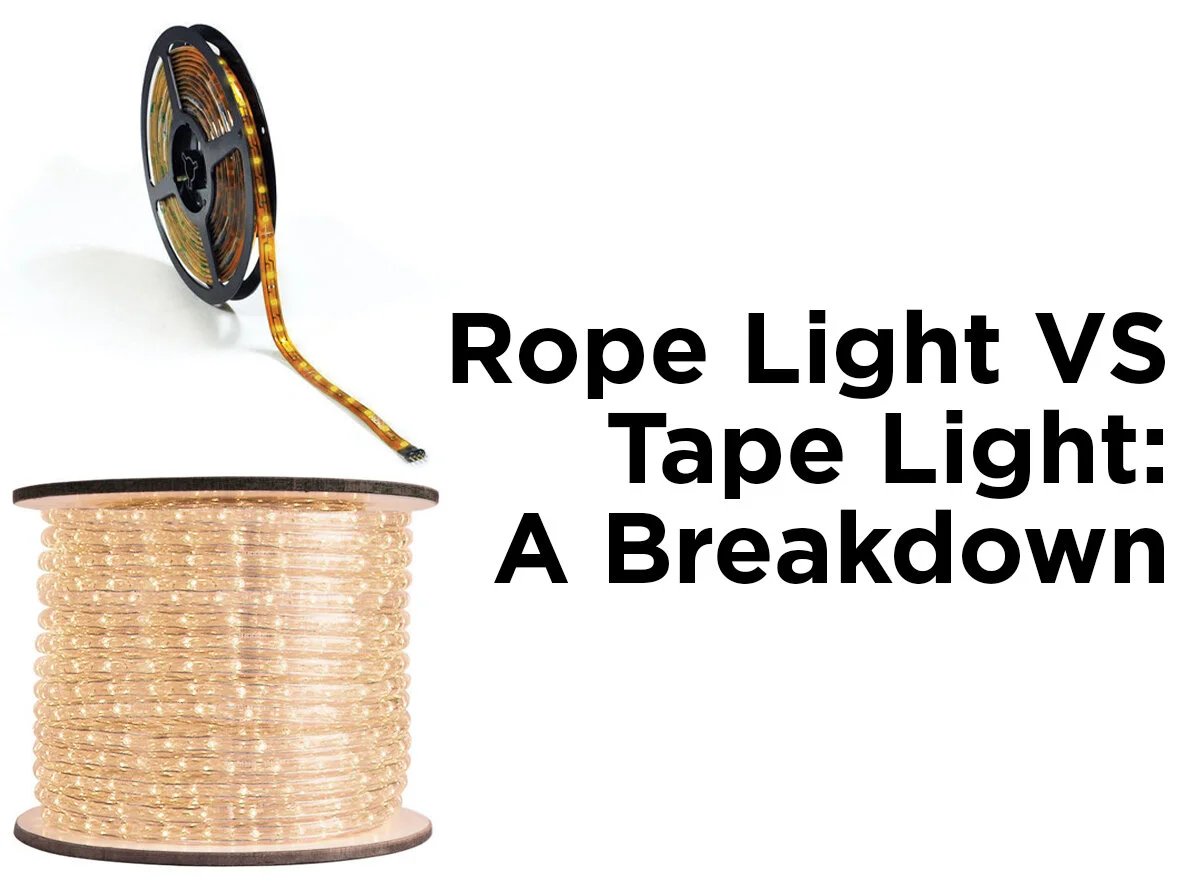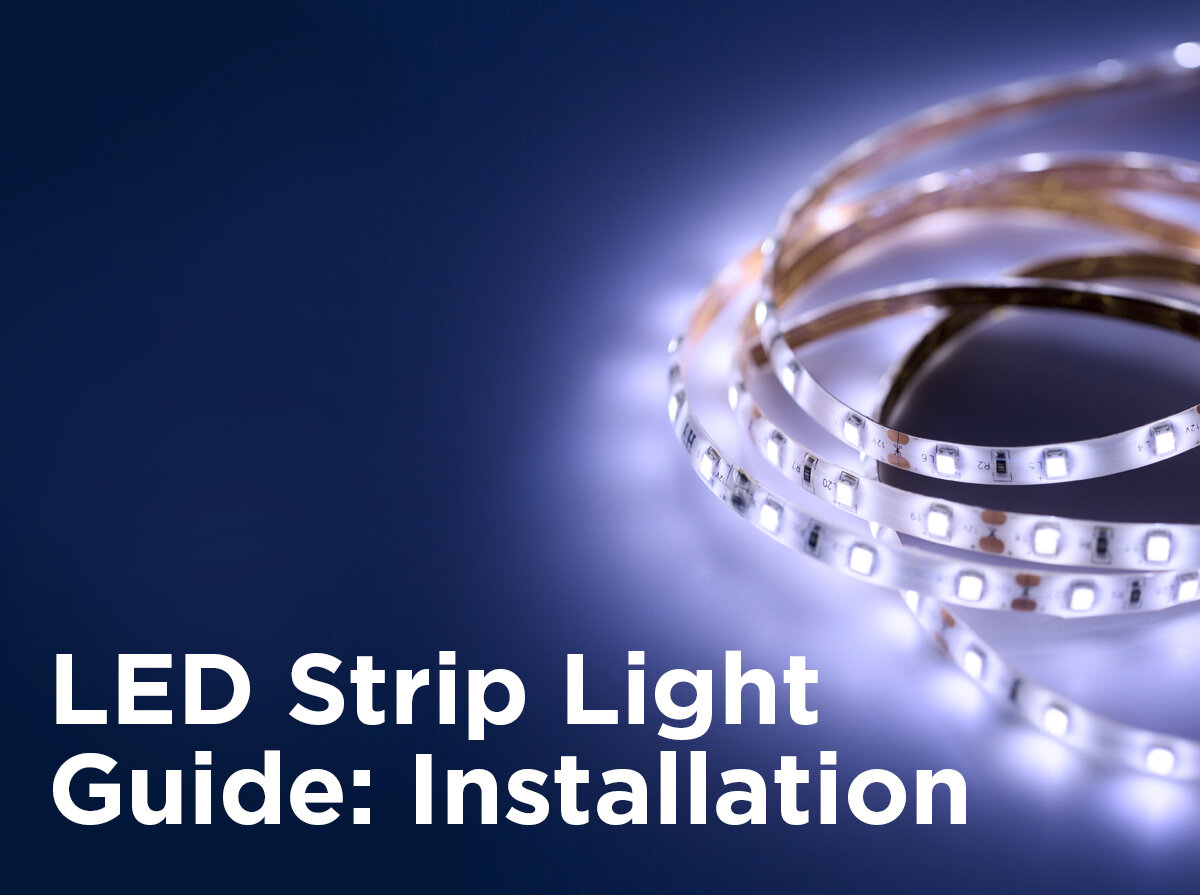LED Strip Light Guide: Purchasing Considerations
Perhaps you’ve seen pictures of LED strip light (also referred to as LED tape light) or you’ve witnessed its magical effects for yourself. Either way, you’ve decided to purchase some strip light of your own. But looking at all the websites that sell it, you’re feeling pretty stumped on how to get started. Fortunately, our LED strip light guide makes choosing and setting up strip light easy. This 3-part series will tell you the basics of what you need to know to get your strip light project up and running. To start off this series, we outline a few things to consider before making a purchasing decision. Later we’ll follow with a checklist for installation and end with a piece on troubleshooting. If you have questions at any time, feel free to ask us in the comments. We’d love to hear from you!
Part 1: LED Strip Light Purchasing Considerations
1. Should you use 12 or 24 volt strip light? One of the first things to figure out is whether you need 12 volt or 24 volt strip light. This really depends on the size of the place where you will be using your strip light. 12 volt strip light is typically used for shorter runs while 24 volt strip light is better for longer runs. The reason is because higher voltage strip lights can sustain longer runs without voltage drop becoming a problem. Basically, the further your lights are from the power supply, the lower the voltage becomes down the line, which can cause the LEDs on the end of the strip to appear dimmer than the LEDs near the front. To avoid voltage drop, observe your LED strip light’s maximum run, which should be specified on your lights’ packaging or data sheet.
2. Do you need standard or high-output strip light? If you’re looking for subtle, gentle illumination, you may want to simply use standard tape light. However, if you’re looking for brighter light, you may want to opt for high-output strip light. High-output strip light can be up to 3 times brighter than standard strip light. Standard output strip light is great for small area accents or cabinet lighting while high-output is better for room ambient lighting or backlighting for larger objects or custom fixtures.
3. What power supply (or driver) do you need?
This depends on the wattage of your strip light, not to be confused with the voltage. Sometimes the wattage of your strip light is given based on the total length specified on the packaging; other times, it has to be calculated by adding up the wattage per foot or of each individual LED. Either way, once you know how long your strip light run needs to be, calculate the total wattage of the run(s) you will be using in your strip light installation and choose a power supply that offers 20% more than what you need. Power supplies are not to be loaded to more than 80% of their full capacities to ensure optimum performance. For example, if you’re running a 16-foot strip that is 1.5 watts per foot, pick a power supply that provides at least 30 watts—20% more than the 24 watts you need.
4. Should you use RGB strip light? This is entirely up to preference. That being said, RGB color-changing strip light can produce some pretty amazing effects. Not only can RGB strip light be changed from color to color with an RGB controller, but you can also make your colors flash at different speeds as well. These effects can liven up any situation your strip light will be used in, whether adding character to a kids’ room or intrigue at a party.
5. Are channels necessary for your strip light?
While channels aren’t necessary for strip light, they are recommended. LED strip light channels (also called profiles, extrusions, or channel guides) offer a more polished, professional look to strip light installations. There are a wide variety of channels available, each manufactured with a particular strip light configuration or application in mind.
In short, consider factors such as strip length, brightness, wattage, and how to choose the appropriate power supply when choosing LED strip light. Keep in mind that while color-changing strips and channel guides are optional, they can really do a lot to spruce up your installation.
Be sure to check out Part 2: Installation and Part 3: Troubleshooting to complete our guide! Do you have any questions so far? Let us know below or ask away on Facebook, Twitter, LinkedIn, Instagram or Pinterest.







